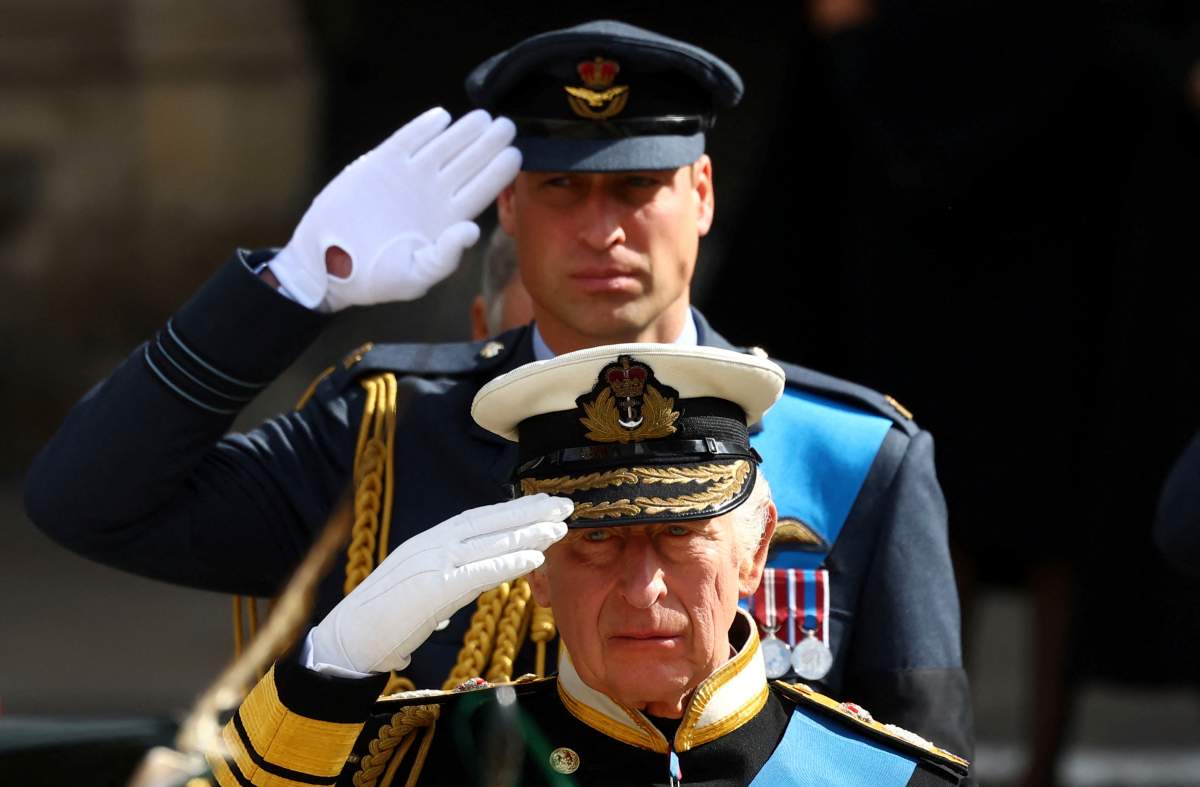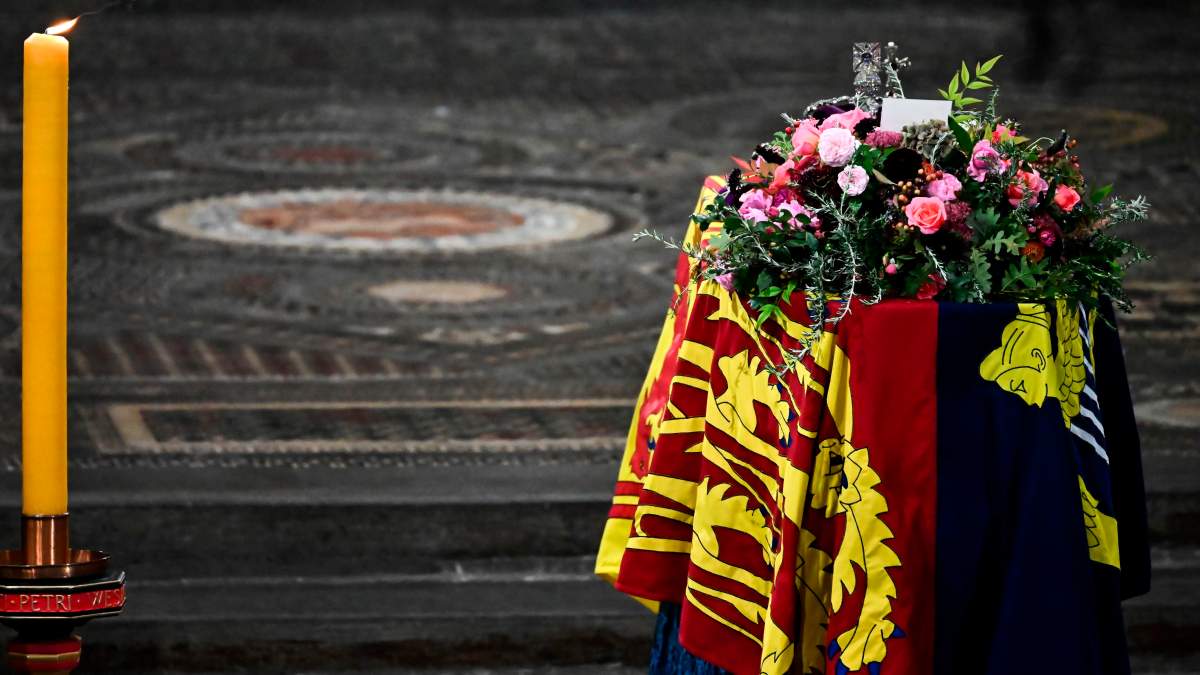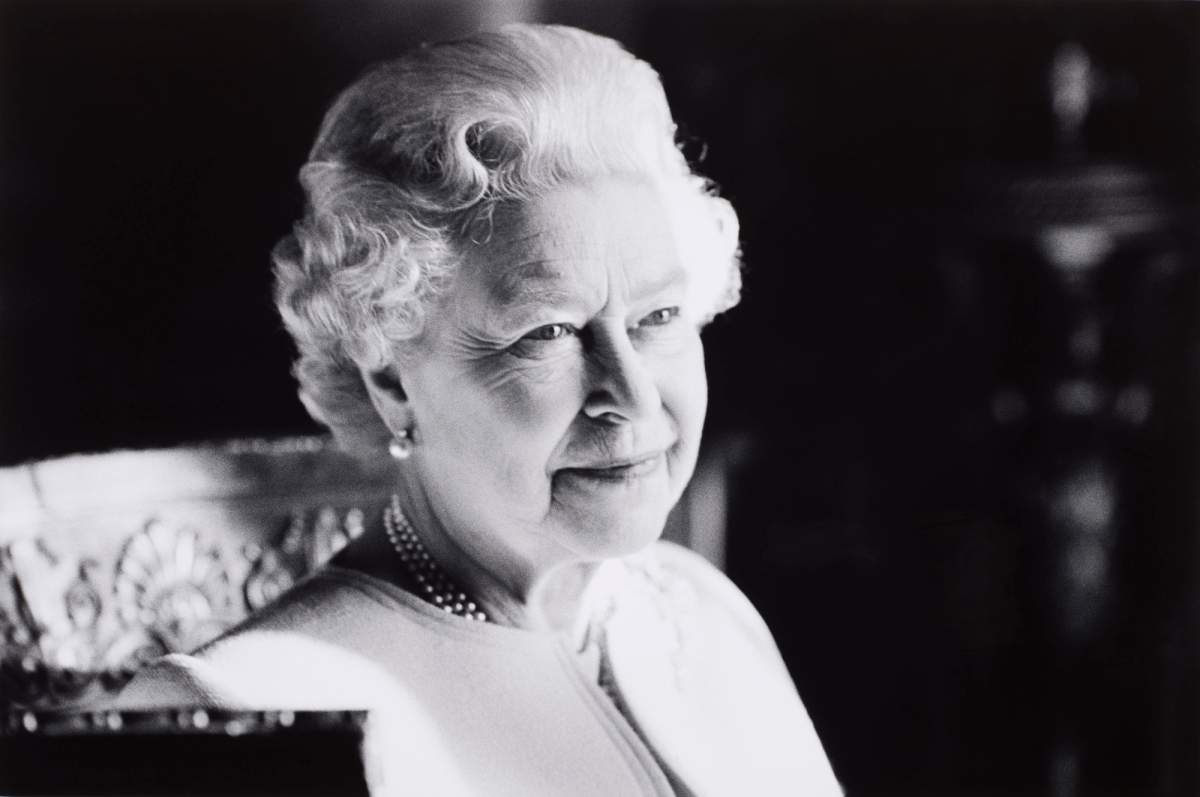Great Britain and the world said goodbye to Queen Elizabeth II on Monday during a state funeral for the 96-year-old British monarch that drew not only leaders, but everyday people from around the globe.

Elizabeth, who sat on the throne for 70 years, died on Sept. 8 in her beloved Scottish residence, Balmoral Castle, alongside members of her family. Her son, King Charles III, ascended to the throne and became head of state for the United Kingdom, Canada and other Commonwealth nations.
The United Kingdom’s first state funeral since Winston Churchill’s in 1965 was filled with spectacle. Ahead of the service, a bell tolled 96 times — once a minute for each year of Elizabeth’s life.
Then, 142 Royal Navy sailors used ropes to draw the gun carriage carrying her flag-draped coffin to Westminster Abbey before pallbearers bore it inside the church, where around 2,000 people ranging from world leaders to health-care workers were there to mourn her.
Her coffin was draped with the Royal Standard and atop it sat the Imperial State Crown, sparkling with almost 3,000 diamonds, and the sovereign’s orb and scepter.
“Here, where Queen Elizabeth was married and crowned, we gather from across the nation, from the Commonwealth, and from the nations of the world, to mourn our loss, to remember her long life of selfless service, and in sure confidence to commit her to the mercy of God our maker and redeemer,” said the dean of the medieval abbey, David Hoyle, to the mourners as the funeral opened.

The service drew to a close with two minutes of silence observed across the United Kingdom. The attendees then sang the national anthem, God Save the King.
Following the service, the queen’s family accompanied her coffin from the medieval cathedral in a military procession that carried her to Windsor Castle as a vast crowd looked on from the sides of London’s streets.
Members of the RCMP were near the front of the procession which included armed forces members from Canada and around the Commonwealth.

Get breaking National news
Monday was declared a public holiday in Britain in honour of Elizabeth. The U.K. descended into 10 days of mourning following her death on Sept. 8. Canada also declared Monday a federal holiday to mark the queen’s funeral.
World leaders were in London for the state funeral. U.S. President Joe Biden, Gov. Gen. Mary Simon and Prime Minister Justin Trudeau, alongside several of his predecessors, were in attendance. Canada’s delegation also included former governors general Michaelle Jean and David Johnston, as well as former prime ministers Kim Campbell, Jean Chretien, Paul Martin and Stephen Harper.
Following the events in London, Elizabeth’s coffin was brought up to Windsor Castle for the committal service at St. George’s Chapel. It was during that ceremony that the Imperial State Crown and the sovereign’s orb and scepter were removed from the coffin and placed on the altar — separating the queen from her crown for the last time.
At the end of the committal service, The King placed the queen’s Company Colour of the Grenadier Guards on the coffin and at the same time, The Lord Chamberlain “broke” his Wand of Office and placed it on the coffin to signify the end of service.
Her coffin was then lowered into the royal vault through an opening in the chapel’s floor. The queen will be buried there alongside her late husband, Philip, the Duke of Edinburgh, who died last year.
A look back at Queen Elizabeth II's career
A woman born into the Royal Family, Elizabeth was never expected to become queen.
Born April 21, 1926, her life took a wild turn — one of immeasurable consequence — when her uncle, King Edward VIII, abdicated the throne in 1936, passing the crown and all its duties to his brother, young Elizabeth’s father.
In one fell swoop, she was next in line to the throne.
Her accession in 1952 came earlier than many expected, when she was just 25. Her father had succumbed to his many illnesses, including lung cancer, leaving the throne vacant for his young daughter. Her actual coronation took place in 1953 in Westminster Abbey; she was crowned queen at age 27.
Over the course of her reign, Elizabeth would lead the U.K. and Commonwealth through the Cold War and space race, revolutions in Eastern and Central Europe, the advent of the Internet, the British Invasion, the War on Terror and London tube bombings, and the establishment of the European Union, not to mention in her later reigning years SARS, Brexit and COVID-19.
In Canada, Louis St. Laurent was prime minister when the queen ascended the throne and became this country’s sixth sovereign since Confederation. She went on to meet almost every successive prime minister — at least, those who were in office long enough. There was a special moment in 2015 when she met Trudeau, whom she’d met as a child decades prior, when his father was prime minister.
Throughout Elizabeth’s reign though, at least 25 countries declared independence from the monarchy and others, including Canada, loosened their ties. Most recently, Barbados severed ties with the monarchy in November 2021.
Despite the abolishment of the monarchy in some nations, her personal popularity remained strong and is often credited for the monarchy’s survival through modern times.
In terms of length of reign, Elizabeth lags only French King Louis XIV, who sat on the throne for 72 years.
She leaves behind her children: Charles, Anne, Andrew and Edward, eight grandchildren and 12 great-grandchildren.
— with files from Global News’ Chris Jancelewicz and The Associated Press








Comments